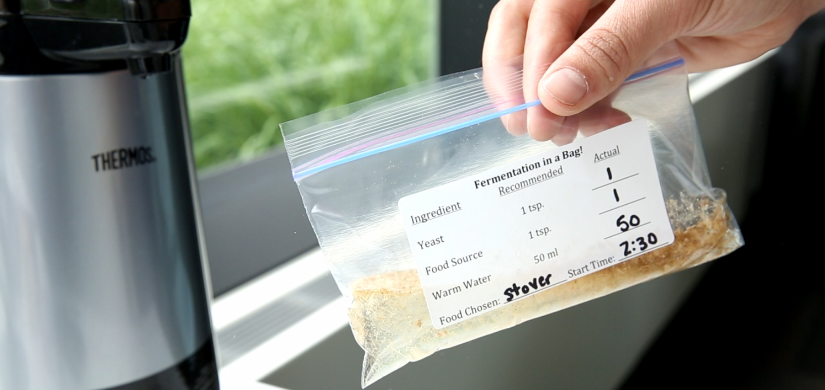Fermentation in a Bag

 In this simple experiment, students investigate the process of fermentation in resealable bags with bakers yeast, warm water and various sources of plant sugar. Students observe and measure evidence of the chemical changes associated with fermentation: bag inflation (CO2) and indicators of ethanol production. Younger students can observe fermentation in a single bag, while older students can create multiple set-ups to compare how yeast ferments sugar, starch and cellulose-based biomass options. Students can measure and compare fermentation rates between feedstocks using a variety of methods including ethanol probes, breathalyzers or bag inflation. This activity works well in a variety of formal and nonformal educational settings. In the classroom setting, it can serve as an engaging activity to launch more in-depth investigations into biofuels.
In this simple experiment, students investigate the process of fermentation in resealable bags with bakers yeast, warm water and various sources of plant sugar. Students observe and measure evidence of the chemical changes associated with fermentation: bag inflation (CO2) and indicators of ethanol production. Younger students can observe fermentation in a single bag, while older students can create multiple set-ups to compare how yeast ferments sugar, starch and cellulose-based biomass options. Students can measure and compare fermentation rates between feedstocks using a variety of methods including ethanol probes, breathalyzers or bag inflation. This activity works well in a variety of formal and nonformal educational settings. In the classroom setting, it can serve as an engaging activity to launch more in-depth investigations into biofuels.
Extend the learning by combing this activity with the Modern Scientist-Engineer in the World of Fermentation research story, Boosting Yeast's Appetite for Sugars data dive, Fermentation Challenge: Making Ethanol from Cellulose activity, and CB2E: Converting Cellulosic Biomass to Ethanol lab.
Access Activity Materials!
